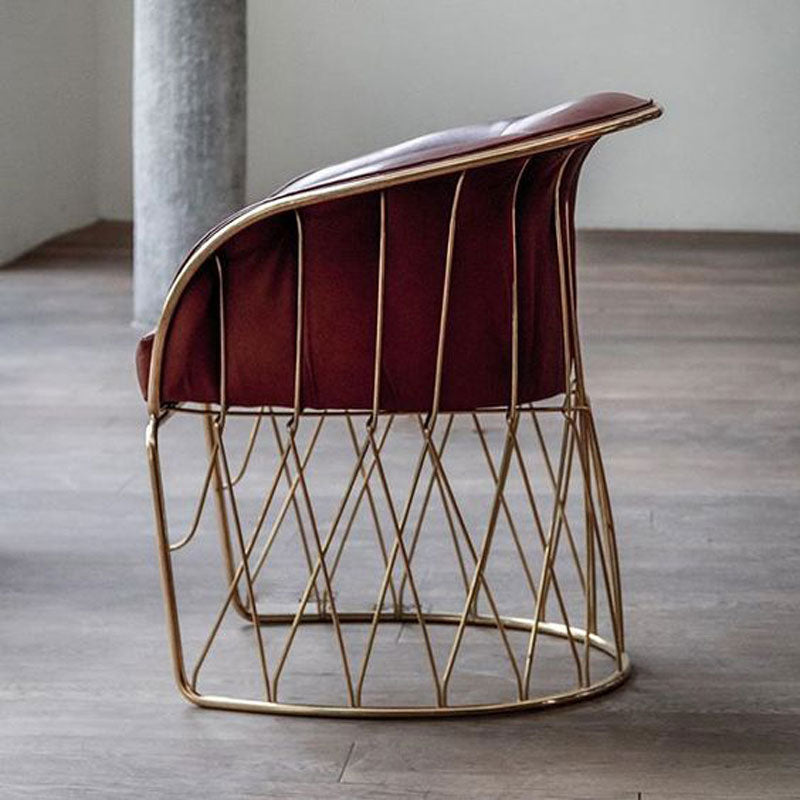The encounter between different ethnic groups results in the emergence of new phenotypes and cultural syncretism. Among these manifestations, objects are the witnesses of this phenomenon. The equipal chair portrays America’s historical miscegenation process.
Starting with its name, the word equipal is born from the phonetic adequacy that the Spanish people who arrived in pre-Hispanic Mexico gave to the Náhuatl word icpalli. Its meaning can be translated to today’s context simply as “seat”; however, getting into the pre-Columbian culture context, we find that icpallis were destined for the governing class, nobles, and rich people. Evidently, the rest of people also sat down, but they used rustic objects, stools, trunks, or rocks to do so. This entails that icpallis were artifacts intended for a small part of society, in addition to being utility instruments and a symbol that meant power and hierarchy.
Through the differences found in old codes and some texts written by Fray Bernardino de Sahagún, it can be inferred that these chairs were made with canes and reeds; weaved fibers similar to what we know today as petate were used. The seating position was not limited to a popliteal height, sitting down on the floor or kneeling was a common practice and for this reason, there were pieces of furniture for these positions. There is also evidence of trunks built exclusively for the gods or tlatoque (plural for tlatoani), which usually included rocky materials in their making.

With the aforementioned, we can determine that the term icpalli is broader than what we understand today as an equipal. This piece of furniture has a defined typology. In general terms it is defined as an individual chair with a structure made of kidneywood, its inferior part is structured and also covered by posts made of posa panal wood, which is characterized for having strong veins and colors. Traditionally, the parts were put together by being tied and weaved with ixtle, which is the fiber extracted from the maguey plant. The back is a curved shape joined to the armrests. Thanks to these features, we can classify this piece of furniture as a high-backed chair. The seat’s inner support and the back were made with weaved fibers that were later tied to the structure. Finally, the chair is usually covered in pigskin.
Of course, the equipal’s manufacturing process has been artisanal and using primitive tools, the result are these pieces with significant variations that will depend on the making and the size of the wood collected, as well as on the particularities of the leather.
Miscegenation
Having gone through part of history, it is clear that their origin goes back to pre-Columbian days; however, there is an element that suggests that the construction of equipales as we now know them comes from a later time: pigskin. Let us recall that cattle ranching was introduced in America with the arrival of the Spanish people. Prior to this, the new continent employed the skin of endemic species and it is possible that some were employed in the creation of furniture.
In summary, equipal is a chair made with materials from Mesoamerica combined with pigskin, which was introduced with the arrival of the new culture. It is hard to determine the existence of similar objects used by pre-Hispanic cultures with precision, since this type of material usually does not leave traces behind, but it is possible to note that it is a piece of furniture that took components from different times in the history of ancient Mexico.
Today
This armchair is still being manufactured in an artisanal way; the town of Zacoalco de Torres in Guadalajara, Mexico is famous because most of its population works in the production of equipales.

Naturally, some variations from the original model have been made, adding, for example, cushioning under the leather, the use of nails, glues, coatings, and varnishes. Also, complementary pieces using the same language have been developed, like tables, stools, and sofas. Many of these products are exported and valued greatly for their craftsmanship quality.
Legacy
Many references have been made to this item and not exalting it, precisely, but simply showing it as an everyday object in a mainly countryside context, in Mexico. In one of Juan Rulfo’s book, Pedro Páramo, we can read: “Back there, Pedro Páramo, sitting on his equipal, looked at the procession headed for the town”. With that sentence we can imagine a piece that is traditionally part of rustic houses and that perhaps is still a symbol of power for those who use it.
In 1964, architect Pedro Ramírez Vázquez offered a reinterpretation, as part of the Mexican modernist wave, where many traditional symbols were taken and turned into “current” objects. The piece by the architect is made of pipes and chromed steel bars with cushions lined with black leather. It is a literal interpretation, which in a way simplifies the geometry of the original concept.

Today and with the democratization of the chair, so to speak, it is likely, at least for Mexican people, to have sat in one of these chairs and have felt what makes this piece special: the feeling of sitting on a little piece of history.


